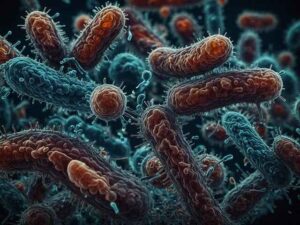Power of Beneficial Bacteria: Nature’s Tiny Allies
Welcome to Triple W: Unveiling the Power of Beneficial Bacteria – Nature’s Tiny Allies
Hey there, curious minds! Welcome to Triple W, where we dive deep into the wonders of the natural world and uncover the hidden gems that make our lives better. Today, we’re shining a spotlight on a fascinating subject that’s been buzzing in the scientific community and beyond: the power of beneficial bacteria.
These microscopic marvels, often overshadowed by their harmful counterparts, are nature’s tiny allies working tirelessly behind the scenes. From boosting our immune systems to enhancing soil fertility, beneficial bacteria play a crucial role in maintaining the balance of ecosystems and supporting our well-being. They might be small, but their impact is monumental.
In this post, we’ll explore how these tiny powerhouses contribute to our health, agriculture, and even environmental sustainability. Whether you’re a science enthusiast or simply curious about the invisible helpers around us, get ready to uncover the incredible ways beneficial bacteria are shaping our world for the better. So, let’s dive in and celebrate the unsung heroes of the microbial realm!

Here are the benefits of Bacteria –
(i) About 2100 antibiotics have been reported so far from Actinomycetes alone. Of these, maximum antibiotics have been reported from Streptomyces alone.
| Antibiotic | Source | Active Against |
| Gramicidin and tyrocidine | Bacillus brevis | Gram Positive |
| Cerexin, biocerin, etc. | B. cereus | Gram Positive |
| Bacitracin, licheniformin, etc. | B. licheniformis | Gram Positive |
| Polymixin-B | В. polymyxa | Gram Positive |
| Bacitracin, eumycin, bacillomycin, etc. | B. subtilis | Gram Positive |
| Kanamycin | Streptomyces kanomyceticus | Gram Positive |
| Terramycin | S. rimosus | Gram Positive and Negative |
| Chloromycetin | S. venezuelae | Gram Positive and Negative |
(ii) The bacteria are important agents in maintaining soil fertility by nitrogen fixation, ammonification and
nitrification.
(iii) Industrial uses :-
(a) Acetic acid is produced by the bacterium Acetobacter aceti from ethanol.
(b) Clostridium acetobutylicum converts acetic acid into acetone and butyric acid to butanol.
(c) Streptococcus lacti converts sugar into lactic acid.
(d) Acetobacter is used for producing substrate, which yields butylene glycol, used in the production of synthetic rubber.
(e) Propionibacterium is used in the manufacture of propionic acid.
(f) Brevibacterium, Corynebacterium, Micrococcus, etc, are employed for glutamic acid fermentation.
(g) Corynebacterium glutamicum produces the amino acid lysine.
(h) Escherichia coli produces the amino acids threonine.
(i) Clostridium acetobutylicum, during sugar fermentation also produces vitamin-B.
(j) Flavouring of tobacco and tea leaves is done by Bacillus megaterium.
(k) Leather industry The decomposing and fermentation capability of bacteria is utilized for removing fats, hairs and other tissues from the hides. The clean hides are then tanned to prepare leather.
(iv) Vitamin-B2 is obtained as a byproduct of Streptomyces antibiotic fermentation and can also be produced commercially by direct fermentation using Propionibacterium shermanii or Pseudomonas denitrificans.
Riboflavin is a by-product of acetone-butanol fermentation.
(v) Retting of flex, jute and hemp is done by the bacterial forms like Clostridium butyricum and C. felsineum. (vi) The milk contains bacterial forms like Streptococcus lacti, Escherichia coli, Lactobacillus lactis, Clostridium sp., Pseudomonas sp., etc. Yogurt is prepared by Lactobacillus sanfrancisco, L. bulgaricus and Streptococcus thermophilus.
(vii) Environment protection
(a) Bacteria are capable of decomposing some hazardous pesticides, e.g., 2,4-D by Achromobacter, Flavobacterium, 2, 2-dischloropropionic acid (dalapon) by Agrobacterium and DDT partially by Acetobacter aerogenes, etc.
(b) Biological control of some insects is done by bacteria, e.g., Bacillus papillae kills Japanese beetle, B. sphaericus kills malarial mosquitoes.
(c) The disposal of sewage is also done by the microbes including bacteria.
(d) The material cycles in an ecosystem are completed by microbial (bacterial) activities.
(viti) Methanobacillus occurs not only in marshes but also in dung. It produces methane under anaerobic condition by
the fermentation of organic matter which is the source of power in the form of biogas.
(ix) In the process of tanning hides, the tannins are broken down by bacterial fermentation. This protects hides from
spoilage by putrefaction.
So Its all about Useful Bacteria. Hope this article helps you to understand the benefits of bacteria.
Thank you.